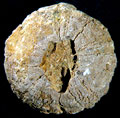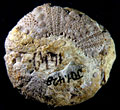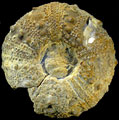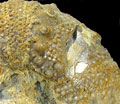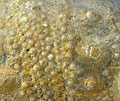The Echinoid Directory
Contributed by Andrew Smith, September 2006
Monodiadema de Loriol, 1890, p. 58
[=Recrosalenia Currie, 1925, p. 47, type species Recrosalenia somaliensis Currie, 1925 ]
| Diagnostic Features |
|
|---|---|
| Distribution | Middle to Upper Jurassic (Bathonian-Kimmeridgian), Portugal, North Africa. |
| Name gender | neuter |
| Type | Monodiadema cotteaui de Loriol, 1890, p. 58, by original designation. Types: Geological Survey of Portugal. ?Syntypes: de Loriol Collection, Museum d\'Histore Naturelle, Geneva 25247. |
| Species Included |
|
| Classification and/or Status | Euechinoidea, Acroechinoidea, Diadematoida, Heterodiadematidae |
| Remarks | Distinguished from Emiratiidae by having ambulacral tubercles very much smaller than interambulacral tubercles even at the ambitus. Distinguished from acrosaleniids by its distinctive ambulacral tuberculation (without large primary tubercles) and by its caducous apical disc. Its ambulacral tubercles are reminiscent of the pattern seen in the diadematoid Echinothrix. Lantern structure of Monodiadema is needed to confirm its taxonomic placement within the Diadematoida. de Loriol, P. 1890. Description de la faune jurassique du Portugal. Embranchement des échinodermes, 1. Échinides réguliers ou endocycles. Mémoires de la Commission des Travaux géologiques du Portugal, 109 pp., 18 pls. |
